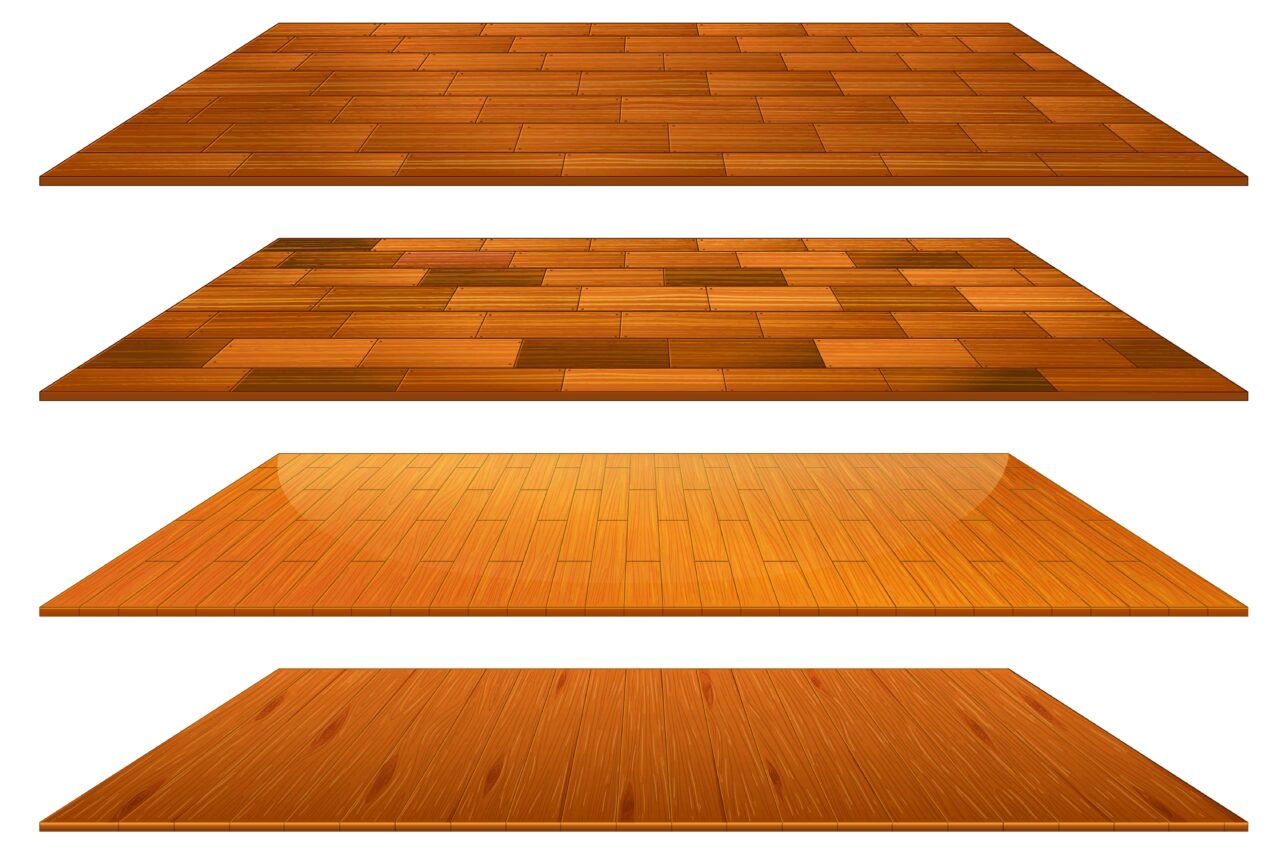Introduction:
Opting for hardwood flooring is a classic and sophisticated way to elevate your home’s aesthetic appeal and overall value. When installing hardwood flooring, there are two primary approaches: the traditional methods that involve adhesive, nails, or screws to secure the planks to the subfloor and the progressively favored “floating floor” technique. Within this comprehensive guide, we will immerse ourselves in floating floors, gaining insights into their natural advantages and providing comprehensive guidance on installation and maintenance.
Chapter 1: What is a Floating Floor?
When you hear the term “floating floor,” it might sound like a type of flooring material, but it refers to a specific installation method. A floating floor is not directly attached or fixed to the subfloor. Instead, the individual planks or tiles of the flooring are connected, creating a stable surface that “floats” over an underlayment.
Chapter 2: Types of Hardwood Flooring Suitable for Floating
Not all hardwood flooring can be floated. The critical consideration is structural stability. At the same time, beautiful, durable, solid wood flooring lacks the dimensional stability required for a floating installation. On the other hand, engineered hardwood flooring is specifically designed to handle floating demands. Engineered hardwood consists of multiple layers, including a strong core, which provides the necessary stability.
Chapter 3: Selecting the Right Underlay
The success of a floating floor installation hinges on the choice of underlay. Underlayment serves several purposes: sound insulation, moisture protection, and thermal insulation. Depending on your specific needs, you may opt for a sound-reducing underlay for a peaceful living environment, a thermal barrier for insulation, or an underlay compatible with underfloor heating systems for added comfort.
Chapter 4: The Floating Floor Installation Process
Before installing your floating hardwood floor, ensure your subfloor is in excellent condition. We recommend checking our detailed guide on subfloor preparation to get it right.
Once your subfloor is ready, you can proceed with the installation process:
4.1. Underlay Placement: Roll out the selected underlay and carefully cut it to match the room’s dimensions. Proper underlay placement provides a comfortable and stable foundation for your floating floor.
4.2. Choosing the Starting Wall: Select the starting wall from which you’ll install your hardwood planks. This decision is crucial as it sets the tone for the entire installation.
4.3. Plank Connection: Depending on the type of engineered hardwood you’ve chosen, you’ll either click and lock the planks together (for click-fitting engineered hardwood) or apply WPVA glue to adhere the tongues and grooves (for tongue and groove engineered wood).
4.4. Expansion Gap: During installation, an expansion gap around the room’s perimeter is vital. This gap accommodates the natural expansion and contraction of the flooring due to changes in temperature and humidity. You can later conceal this gap with skirting boards or beading.
Chapter 5: The Benefits of Floating Floors
Floating flooring has several characteristics that make it popular among homeowners:
5.1. Ease of Installation: One of the primary benefits of floating floors is their ease of installation. Unlike traditional methods that involve heavy equipment and extensive subfloor preparation, floating floors can often be installed quickly and with minimal effort.
5.2. Versatility: Floating floors can be installed over a variety of subfloor types, including concrete, plywood, and existing flooring, making them a versatile choice for both new construction and remodeling projects.
5.3. Less Disruption: Since floating floors aren’t permanently attached to the subfloor, they can be easier to remove or replace if needed. This feature reduces disruption during renovations.
5.4. Moisture Resistance: The underlayment used in floating floor installations provides a barrier against moisture, helping to protect your hardwood flooring from potential damage.
5.5. Comfort: The underlay used in floating floor installations can provide added cushioning and comfort underfoot, making these floors a comfortable choice for living spaces.
Chapter 6: Maintaining Your Floating Hardwood Floor
Proper maintenance is essential to preserve the beauty and longevity of your floating hardwood floor. Here are some essential maintenance tips:
6.1. Cleaning: Regularly sweep or vacuum your floating floor to remove dirt and debris. Use a damp mop with a manufacturer-approved cleaner to keep the surface clean.
6.2. Avoid Excess Moisture: While floating floors are more moisture-resistant than traditional hardwood, cleaning up spills promptly and avoiding excessive moisture exposure is still important.
6.3. Furniture Pads: Place furniture pads or coasters under heavy furniture to prevent scratches and indentations on the floor.
6.4. Area Rugs: Consider using area rugs in high-traffic areas to protect the floor from wear and tear.
6.5. Refinishing: Depending on the thickness of the hardwood wear layer, some floating floors can be refinished if they become scratched or worn over time.
Conclusion:
Floating floors offer a convenient and versatile way to enjoy the beauty of hardwood flooring in your home. By understanding the installation process, selecting the correct type of hardwood and underlay, and following proper maintenance guidelines, you can ensure that your floating floor remains a stunning and durable addition to your living space.
A floating floor installation method provides several benefits, especially with engineered hardwood flooring. It’s a versatile option suitable for various subfloors, and with proper maintenance, it can be a long-lasting and attractive choice for your home.
FAQS
What is a floating floor installation system?
A floating floor installation system is a flooring method that doesn’t require nails or glue to attach the flooring to the subfloor. Instead, the individual planks or tiles are interlocked or glued together at their edges, allowing the entire floor to “float” over the subfloor without direct attachment. This system is commonly used for laminate, engineered wood, and luxury vinyl flooring, providing a stable and resilient surface.
What are the benefits of a floating floor?
Floating floors come with several benefits. They are known for their ease of installation, making them a popular choice for DIY projects. Without extensive preparation, these floors can be installed over different subfloors, including concrete. Their natural ability to expand and contract handles temperature fluctuations well. Floating floors also offer sound insulation and a comfortable feel underfoot, thanks to their cushioned underlayment. Additionally, they are often more budget-friendly and more accessible to replace if damaged than other flooring options.
What does floating mean on the floor?
What does floating mean on a floor? In flooring, “floating” refers to an installation method where the floor material doesn’t directly attach to the subfloor but instead “floats” over it. This approach is often used for laminate, engineered wood, or luxury vinyl plank flooring. A thin underlayment is placed on the subfloor, and the flooring material is installed on top using click-and-lock systems. Floating floors are favored for their ease of installation and versatility.
What is a floating floor called?
What’s a floating floor called? Well, it’s aptly named—it’s a type of flooring that sits above the subfloor without being glued or nailed down. This popular choice is known for its easy installation and adaptability, accommodating materials like laminate, engineered wood, and luxury vinyl. Floating floors typically use interlocking planks or tiles for stability and can be installed over existing floors with minimal adhesive or fasteners.


